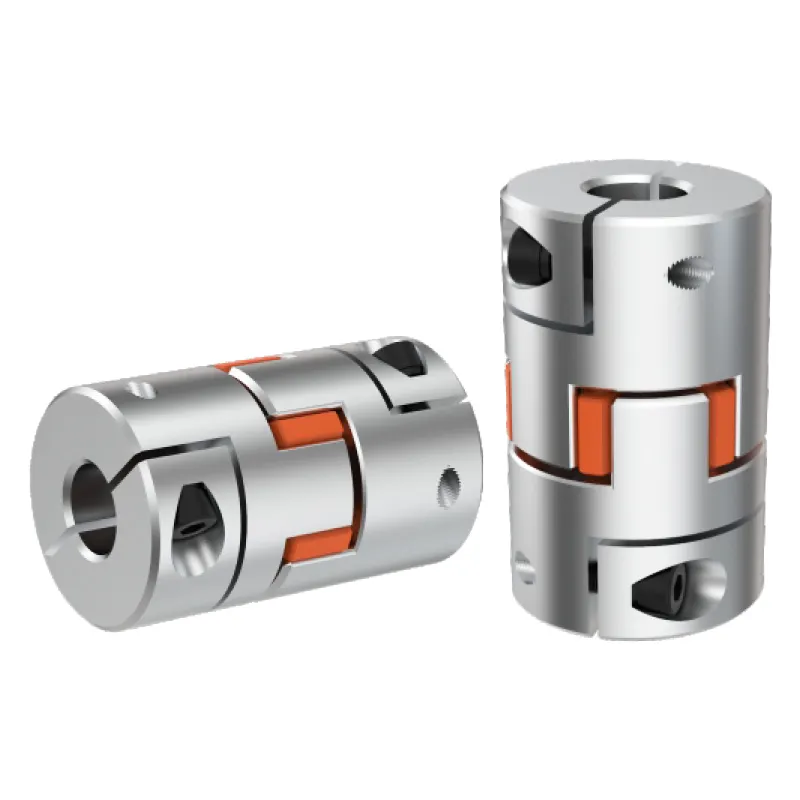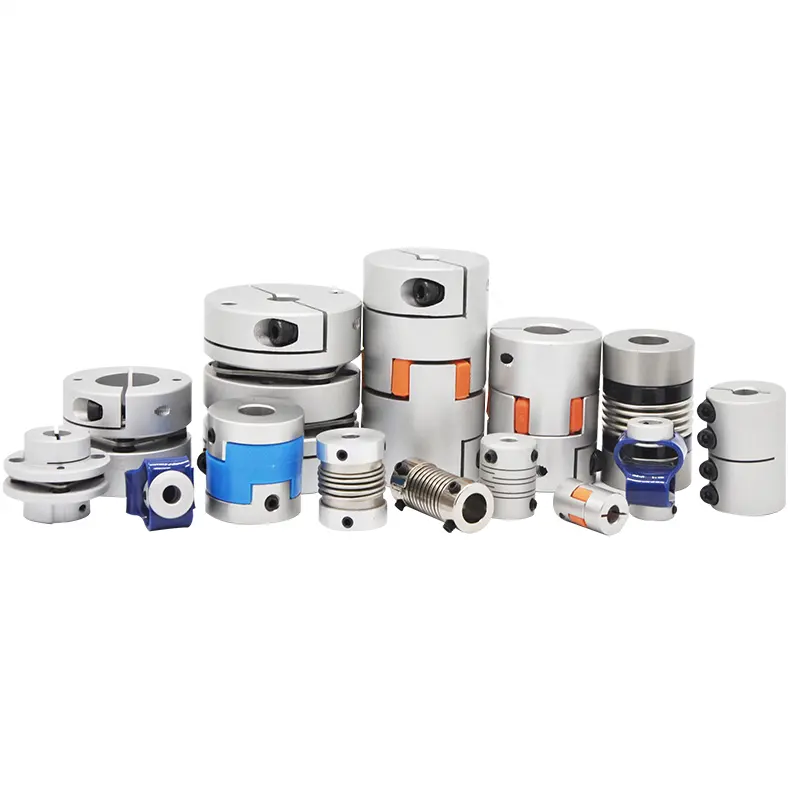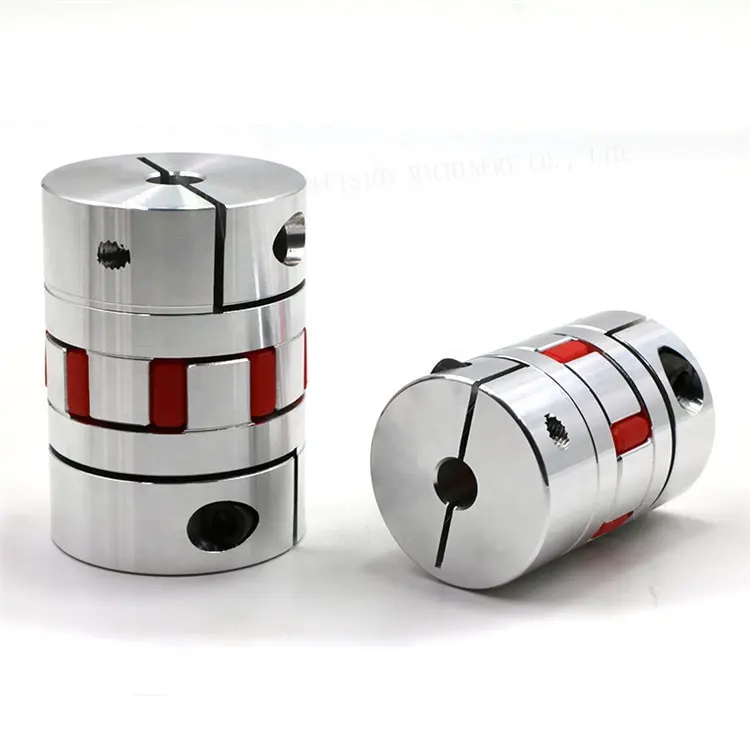Product Description
GR GE Jaw coupling with Rubber Elements
| Product Name | Tyre Coupling |
| Material | Steel |
| Elastomer Material | Rubber |
| Structure | 2 shaft & flexible spider |
| Bore size | Finished bore |
| Weight | About 3.3kg / pcs |
| packing | plastic bag +paper box +wooden box +wooden pallet |
Main Products:
1. Timing Belt Pulley (Synchronous Pulley), Timing Bar, Clamping Plate;
2. Forging, Casting, Stampling Part;
3. V Belt Pulley and Taper Lock Bush; Sprocket, Idler and Plate Wheel;Spur Gear, Bevel Gear, Rack;
4. Shaft Locking Device: could be alternative for Ringfeder, Sati, Chiaravalli, Tollok, etc.;
5. Shaft Coupling: including Miniature couplings, Curved tooth coupling, Chain coupling, HRC coupling,
Normex coupling, Type coupling, GE Coupling, torque limiter, Universal Joint;
6. Shaft Collars: including Setscrew Type, Single Split and Double Splits;
7. Gear & Rack: Spur gear/rack, bevel gear, helical gear/rack.
8. Other customized Machining Parts according to drawings (OEM) Forging, Casting, Stamping Parts.
Packaging & Shipping:
All the products can be packed in cartons,or,you can choose the pallet packing.
MADE IN CHINA can be pressed on wooden cases.Land,air,sea transportation are available.UPS,DHL,TNT,
FedEx and EMS are all supported.
Company Introduction:
Factory View:
Exhibition:
FAQ:
1. MOQ
A: Generally, 1 pc for standard parts; contact for nonstandard parts.
2. Delivery Time
A: In stock: within 5 working days. Out of stock: depends on your order quantity.
3. How To Select
A: part number or drawing, catalogue. If no, you can send us your sample, so we can make the drawing and sample accordingly.
4: What is the Warranty for your products?
A:Normally our warranty is 1 year.
Contacts:
/* March 10, 2571 17:59:20 */!function(){function s(e,r){var a,o={};try{e&&e.split(",").forEach(function(e,t){e&&(a=e.match(/(.*?):(.*)$/))&&1

Impact of Jaw Coupling on the Overall Reliability of Connected Equipment
A jaw coupling plays a critical role in enhancing the overall reliability of connected equipment in mechanical power transmission systems. Its design and features contribute to various aspects that positively influence reliability:
- Misalignment Compensation: One of the key benefits of jaw couplings is their ability to accommodate misalignment between shafts. By allowing for angular, parallel, and axial misalignment, the jaw coupling reduces stress on connected equipment. It helps prevent excessive forces and shaft bending that can lead to premature wear or failure.
- Shock Absorption: The elastomeric spider element used in jaw couplings acts as a shock absorber. It dampens vibrations and shock loads, protecting connected equipment from sudden jolts or impacts that could cause damage or fatigue over time.
- Torsional Damping: Jaw couplings provide torsional damping, reducing the risk of torsional vibrations that can negatively affect equipment performance. By minimizing vibrations, the coupling contributes to smoother operation and extended equipment life.
- Fail-Safe Design: In the event of a spider failure, jaw couplings often offer a fail-safe design. The spider is a replaceable component, and its failure does not typically lead to catastrophic failure of the coupling or connected equipment. This characteristic enhances the overall system reliability and simplifies maintenance.
- Low Maintenance: Jaw couplings are relatively low maintenance compared to other coupling types. The elastomeric spider does not require lubrication and has a longer service life compared to metallic couplings. This reduces the frequency of maintenance activities, minimizing downtime and increasing equipment reliability.
- Backlash-Free Operation: Some jaw couplings are designed to provide backlash-free operation, ensuring accurate motion transmission without play or clearance. This feature is particularly important in precision systems, preventing positioning errors and contributing to consistent performance.
- Corrosion Resistance: Jaw couplings are available in various materials, including stainless steel and corrosion-resistant alloys. Choosing the appropriate material for the specific environment ensures the coupling's longevity and reliability, even in harsh operating conditions.
- Reduced Vibration Transfer: By isolating vibrations, jaw couplings prevent the transfer of harmful vibrations between connected equipment. This safeguard is crucial in delicate systems where excessive vibrations could lead to malfunction or damage.
Overall, a well-chosen and properly installed jaw coupling positively impacts the reliability of connected equipment. It helps prevent mechanical stress, dampens vibrations, and provides a reliable connection between shafts, contributing to the smooth and efficient operation of the entire mechanical system.

What are the common installation mistakes to avoid when using jaw couplings?
Proper installation of jaw couplings is crucial to ensure their reliable and efficient operation. Avoiding common installation mistakes can prevent premature wear, misalignment, and potential equipment damage. Here are some of the most common installation mistakes to avoid when using jaw couplings:
- Incorrect Coupling Size: Using the wrong size of jaw coupling for the application can lead to various issues. Undersized couplings may not handle the required torque, leading to early failure, while oversized couplings may result in increased rotational inertia and decreased system performance. Always ensure that the selected coupling is appropriate for the torque and power requirements of the equipment.
- Misalignment: Improper alignment of the shafts during coupling installation can cause excessive forces and premature wear on the coupling components. Angular, parallel, and axial misalignments should be minimized and kept within the manufacturer's recommended tolerances. Consider using alignment tools and techniques to achieve accurate shaft alignment.
- Over-Tightening: Applying excessive torque when tightening the coupling elements can lead to deformation of the elastomer spider or damage to the hubs. Over-tightening can also increase friction and cause premature wear. Follow the manufacturer's specified torque values during installation to ensure proper clamping without causing damage.
- Lack of Lubrication: Some jaw couplings require lubrication to reduce friction and wear. Neglecting to lubricate the coupling elements can lead to increased friction, higher operating temperatures, and reduced coupling life. Follow the manufacturer's guidelines regarding lubrication intervals and types of lubricants to use.
- Failure to Inspect Components: Before installation, carefully inspect all coupling components for any signs of damage, wear, or defects. Using a damaged or worn-out elastomer spider or other components can compromise the coupling's performance and reliability. Replace any worn or damaged parts before installing the coupling.
- Improper Shaft End Preparation: Ensure that the shaft ends are clean, smooth, and free from burrs or imperfections before installing the coupling. Rough or uneven shaft surfaces can lead to misalignment and reduce coupling performance. Properly clean and prepare the shaft ends to ensure a secure and accurate fit.
- Not Following Manufacturer's Guidelines: Each jaw coupling has specific installation instructions provided by the manufacturer. Failure to follow these guidelines can result in coupling failure or reduced performance. Always refer to the manufacturer's installation manual and recommendations for proper installation procedures.
By avoiding these common installation mistakes, users can maximize the performance and longevity of jaw couplings in their applications. Proper installation ensures that the coupling operates efficiently, transmits power effectively, and reduces the risk of unexpected failures or downtime.

Use of Jaw Couplings in Horizontal and Vertical Shaft Arrangements
Jaw couplings are versatile and can be used in both horizontal and vertical shaft arrangements. Their flexible and misalignment-absorbing design makes them suitable for various applications in different orientations.
Horizontal Shaft Arrangements: In horizontal shaft arrangements, the shafts are positioned parallel to the ground. Jaw couplings are commonly employed in this configuration to connect two shafts, such as those found in motor-driven systems, conveyor belts, and pumps.
Vertical Shaft Arrangements: In vertical shaft arrangements, the shafts are positioned perpendicular to the ground, one above the other. Jaw couplings can also be used in this setup to transmit power between the two vertically aligned shafts. Examples of applications with vertical shaft arrangements include some types of gearboxes, vertical pumps, and certain types of compressors.
It's important to note that when using jaw couplings in vertical shaft arrangements, the weight of the connected equipment can impose axial loads on the coupling. In such cases, the coupling should be selected to handle both the radial and axial loads to ensure reliable performance.
Whether in horizontal or vertical arrangements, jaw couplings provide a cost-effective and efficient method of power transmission while accommodating misalignment and reducing shock loads. However, it is essential to consider the specific application's requirements and select the appropriate size and type of jaw coupling for optimal performance and longevity.


editor by CX 2024-02-15
